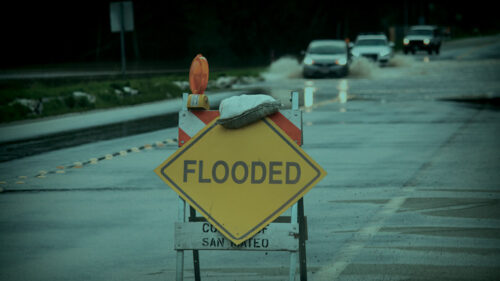It’s that time of year when REO Speedwagon’s “ Ridin’ the Storm Out” song hits home for many businesses. Storms often lead to flooding, the nation’s most common and costly natural disaster…and one that causes millions of dollars in damage every year. Through first quarter 2017, the U.S. has seen an above-average number of storm reports.
If you think you’re immune to this, think again. Floods can happen anywhere. More than 20 percent of flood claims come from properties outside the high risk flood zone. Floods aren’t only unpredictable, but one storm could trigger widespread damaging floods.
So what can your business do to mitigate those potential damages? What’s your “Plan B” if one location is impacted by floods? Can you continue to operate while one location is shut down or inaccessible? These are all questions you should be asking yourself, and I’ve outlined some thoughts you may find helpful below.
Preparing for Floods
The first thing to do as a company or organization is be proactive and prepare. As I said, no one is immune. This simple upfront step can help minimize your potential damage and potentially reduce any business interruptions.
The Federal Emergency Management Agency (FEMA) is an agency designed to coordinate the response to a disaster. FEMA has created a website geared toward identifying potential high risk flood areas. You may wish to check out this site to see where you fit in. The site also contains a variety of resources as well as preparation checklists, claims handbooks, and flood safety precautionary documents.
Create a Flood Plan
Once your business has assessed the risk, the next step is to create a flood plan. Such a plan should include:
- A plan coordinator
- Property loss prevention actions
- A list crucial locations and documents
- A useful contacts list containing contacts such as contractors and water restoration vendors
- Continuity plans with vendors and clients
Once you have a plan created, be sure to review it annually and make changes as appropriate.
Create an Evacuation Plan
If a disaster occurs, your top priority should be protecting the safety and lives of your employees and the individuals around you. Emergency evacuation planning will help reduce confusion, minimize injuries, and ultimately save lives.
Evacuation plans will vary in scope, depending on your facility and the type of emergency. There are some general guidelines you can follow to create an effective evacuation plan.
- Plan for all parties impacted by the disaster.
- Develop roles and responsibilities.
- Establish evacuation routes.
- Provide evacuation information.
Loss Recovery
Thinking ahead before a loss occurs on how to best manage and position any claim you may have for your loss is wise. Besides immediately providing safety for employees and customers, mitigating property damage, and contacting Holmes Murphy, here are some other items to keep in mind.
- Shut down or restart electrical and sprinklers as necessary.
- Don’t spoil the evidence if it in anyway may help experts determine the cause of loss. This isn’t only important for coverage consideration, but it could be necessary for subrogation concerns.
- Take photos if it’s feasible and safe to do so.
- Contact experts who can assist you in getting back to business, including:
- Business contractors for both temporary and permanent repairs.
- Equipment repair experts for specialized computers and equipment.
- Warehousing/office space realtors to find a place to locate.
- Create an accounting system solely for reconciling the loss-related expenditures for claim recovery.
- Make special note of how water accessed your building…meaning surface water, through foundations, or via sewer back up. This may make a difference in whether or not coverage applies.
Indirect Effects
Sometimes businesses are impacted by flooding despite having experienced no direct physical damage. For example: Travel may be cut off to your business as a result of covered and unsafe roads. In these cases, having a plan of where and how to conduct business from another location to minimize any loss of income is well worth the time. The same could apply when flooding impacts the utilities running your business.
Post Disaster Review
Finally, when you’re fully operational after a disaster, your crisis management team should review your flood plan to see if anything could have been done differently.
Reach Out to Us
I can’t end this blog without saying please feel free to contact Holmes Murphy to discuss your options for both before and after such losses to ensure you’re not “Ridin’ the Storm Out” alone.







